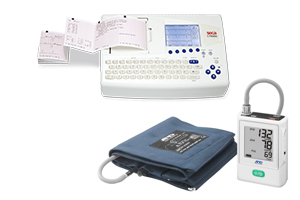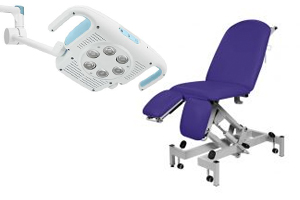Q: What is Coronavirus?
A: Coronavirus is a large family of viruses which may cause illness in animals or humans. In humans, several corona viruses are known to cause respiratory infections ranging from the common cold to more severe diseases such as Middle East Respiratory Syndrome (MERS) and Severe Acute Respiratory Syndrome (SARS). The most recently discovered coronavirus causes coronavirus disease COVID-19.
Q: What is COVID-19?
A: COVID-19 is the infectious disease caused by the most recently discovered coronavirus. This new virus and disease were unknown before. COVID-19 is now a pandemic affecting many countries globally.
Q: What are the known symptoms to COVID-19?
A: The most common symptoms of COVID-19 are fever, dry cough, and tiredness. Some patients may have aches and pains, nasal congestion, sore throat, or diarrhoea. These symptoms are usually mild and begin gradually. Some people become infected but only have very mild symptoms. Most people (about 80%) recover from the disease without needing hospital treatment. Around 1 out of every 5 people who gets COVID-19 becomes seriously ill and develops difficulty breathing. Older people, and those with underlying medical problems like high blood pressure, heart and lung problems, diabetes, or cancer, are at higher risk of developing serious illness. However, anyone can catch COVID-19 and become seriously ill. Even people with very mild symptoms of COVID-19 can transmit the virus. People of all ages who experience fever, cough and difficulty breathing should seek medical attention.
Q: How does the SARS-CoV-2 Antigen Rapid Test work?
A: The SARS-CoV-2 Antigen Rapid Test is a lateral flow chromatographic immunoassay for the qualitative detection the nucleocapsid protein antigen from SARS-CoV-2 in nasal swab specimens directly from individuals who are suspected of COVID-19 by their healthcare provider within the first seven days of the onset of symptoms. The SARS-CoV-2 Antigen Rapid Test is a qualitative membrane based chromatographic immunoassay for the qualitative detection of the nucleocapsid protein antigen from SARS-CoV-2 in human nasal swab specimens. When specimens are processed and added to the test cassette, SARS-CoV-2 antigens, if present in the specimen, will react with the anti-SARS-CoV-2 antibody-coated particles, which have been pre-coated on the test strip. The mixture then migrates upward on the membrane by capillary action. The antigen-conjugate complexes migrate across the test strip to the reaction area and are captured by a line of antibody bound on the membrane. Test results are interpreted visually at 15 minutes based on the presence or absence of visually coloured lines.
Q: What do the test results mean?
A: Results are for the identification of SARS-CoV-2 nucleocapsid antigen. This antigen is generally detectable in upper respiratory samples during the acute phase of infection. Positive results indicate the presence of viral antigens, but clinical correlation with patient history and other diagnostic information is necessary to determine infection status. Positive results do not rule out bacterial infection or co-infection with other viruses. The agent detected may not be the definite cause of disease. Negative results from patients more than seven days post symptom onset should be treated as presumptive and confirmed with a molecular assay, if necessary, for patient management. Negative results do not rule out SARS-CoV-2 infection and should not be used as the sole basis for treatment or patient management decisions, including infection control decisions. Negative results should be considered in the context of a patient’s recent exposures, history and the presence of clinical signs and symptoms consistent with COVID-19
Q: What are the known limitations of the test?
A: The known limitations of the SARS-CoV-2 Antigen Rapid Test are:
- The SARS-CoV-2 Antigen Rapid Test is for in vitro diagnostic use only. The test should be used for the detection of SARS-CoV-2 antigens in nasal swab specimens only. The intensity of the test line does not necessarily correlate to SARS-CoV-2 viral titer in the specimen.
- Specimens should be tested as quickly as possible after specimen collection and at most within the hour following collection.
- Use of viral transport media may result in decreased test sensitivity.
- A false-negative test may result if the level of antigen in a sample is below the detection limit of the test or if the sample was collected incorrectly.
- Test results should be correlated with other clinical data available to the physician.
- A positive test result does not rule out co-infections with other pathogens.
- A positive test result does not differentiate between SARS-CoV and SARS-CoV-2.
- A negative test result is not intended to rule out other viral or bacterial infections.
- A negative result, from a patient with symptom onset beyond seven days, should be treated as presumptive and confirmed with a molecular assay, if necessary, for clinical management.
- If the differentiation
How Quickly Does the Acon FlowFlex COVID-19 Antigen Test Deliver a Result?
An Antigen lateral flow test kits provide a visual, easy to read result in as little as 15 minutes, which means those who test positive can be instructed to isolate quickly and minimise exposure of COVID-19 in your school, workplace, or community.
A positive test should be confirmed by a government approved CPR test.
What is the Difference Between an Antibody and an Antigen Test?
An antibody test is a blood test to determine if you’ve already been exposed to COVID-19 and have developed the relevant antibodies.
It works by detecting antibodies to SARS COV-2 infection in your blood or serum.
A lateral flow (LFT) antigen test looks for an active COVID-19 infection such as the SARS-CoV-2 virus. If your antigen test is positive, you should self-isolate at home and follow government guidance.
Does the FlowFlex Antigen Testing Kit Contain Everything I Need To Perform The Test?
The FlowFlex nose only Rapid Lateral Flow COVID-19 testing kits come supplied with all the necessary tools to carry out the test - no extra equipment is needed. The packs include a workstation to lay out the contents in a way that helps the individual to take the test easily.
Clear instructions are supplied on how to perform the test and read the results.
Are Specialist Personnel Required to Administer the LFT?
These LFD antigen tests are designed to be self-administered.
How Often Should I Check for Symptoms or Test?
As an employer, you need to decide the appropriate timescale between tests. For example, in some sectors (such as health and social care) where interactions with vulnerable individuals are common, repeat rapid antigen testing may be required more often.
This depends on the safety measures that your organisation needs to put in place. The scale of these will be impacted by the size of your workforce, the risk factors identified in your contingency plan and the effect of any requirement to isolate on your ability to continue running your business.
A positive test on the FlowFlex SARS-CoV-2 Rapid Antigen self-test cassette will require for the individual to self-isolate and book a government approved PCR Covid test immediately for confirmation.
How Do I Store the FlowFlex LTF Antigen Test Kit?
The Acon FlowFlex Rapid COVID-19 Antigen Test kits can be stored at room temperature or refrigerated (2-30°C) - please follow instructions on each pack. The test device is stable through the expiration date printed on the sealed pouch. The test device must remain in the sealed pouch until use.
What is the shelf-life of the FlowFlex Rapid Test Nose Only Lateral Flow Test?
Normally the FlowFlex Antigen Test have at least 18 months shelf-life, some batches do extend to 24 months expiry date.
What is the extraction buffer?
The extraction buffer includes components to dissociate viral proteins from their surfaces to be used as a target for the test. The method of the extraction buffer is used to prepare the test sample by dissolving the virus shell, which also deactivates the virus.
Does the test kit include transport media?
The test kit includes an extraction buffer that is used to prepare the specimen for testing purposes. The extraction buffer IS NOT transport media and should not be used to preserve or transport specimens.
Can the test be used with alternative specimen types such as nasal swab or any specimen contained in viral transport media?
The Acon Flow Flex Rapid Antigen Test is for direct nasal swab specimen only. The test can only be used with the swab provided in the kit.
Can I collect the specimen and test at a later time?
The specimen should be tested immediately after collection. The specimen can be retained up to 1 hour following collection if immediate testing of specimens is not possible. Dispose of the specimen and recollect if retained for more than 1 hour.
Can I freeze the device for long-term storage?
The device should never be frozen. If refrigerated, allow the test kit components to reach room temperature before use.
How do I safely dispose of a used FlowFlex lateral Flow Antigen Test kit?
According to the Government instruction leaflets to Care Homes for safe disposal of lateral flow antigen test kits, these can be bagged and disposed of in the normal household waste.
Could vaccination cause a false-positive COVID-19 lateral flow device (LFD) antigen test result?
The Flowflex rapid test Antigen LFD test detects a different protein of the virus than the one encoded in the vaccine. There is no possibility of cross reaction.
Would the FlowFlex Antigen lateral flow test kit detect the new variants of the virus?
Yes, the government has tested the Acon Flow Flex rapid test antigen test for the new COVID-19 variants.















